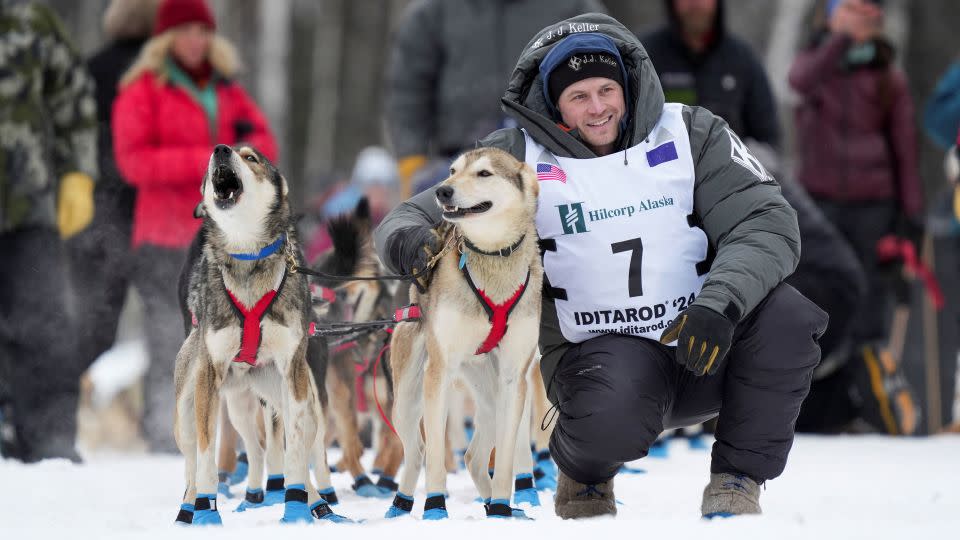Iditarod musher penalized for not sufficiently gutting moose he killed in ‘self-defense’
An Iditarod competitor has been handed a two-hour penalty after failing to properly gut a moose he killed in “self-defense” during Alaska’s legendary long-distance sled dog race, organizers said Wednesday.
Veteran musher Dallas Seavey had told race officials early Monday morning that he had been forced to dispatch a moose after it had become entangled with his dogs. One dog was subsequently injured in the incident and was flown to Anchorage for veterinary care.
Rule 34 states that if an “edible big game animal (i.e., moose, caribou, buffalo) is killed in defense of life or property,” the musher must gut the animal properly and report the incident to a race official.
Officials defined gutting an animal “as taking out the intestines and other internal organs of (a fish or other animal) before cooking it.”
Seavey, who has won the race five times, did notify race officials, but a three-person panel judged the musher had not sufficiently gutted the animal after he spent approximately 10 minutes at the site of the incident.

“It fell on my sled, it was sprawled on the trail,” Seavey told an Iditarod television crew. “I gutted it the best I could, but it was ugly.”
Officials confirmed the two-hour penalty will be assessed at Seavey’s next 24-hour layover. They also said that the moose was later “retrieved, processed and salvaged” and was being “distributed.”
Seavey’s Instagram account said his dog – Faloo – had been given “excellent care” by the Iditarod vets and been allowed to go home.
“We hope to gain additional perspective and insight as Dallas learns that his 24 hour rest is now a 26 hour rest,” said Seavey’s Instragram post. “Thus far the race does seem to have its fair share of set backs, but we know that Dallas will be evaluating and strategizing for the next portion of the race in spite of the difficulties.”
CNN has reached out to race organizers to offer Seavey the opportunity to comment.
The race traditionally begins on the first Saturday in March, starting in Anchorage and ending in Nome.
The race ranges from 975 to 998 miles long, depending on whether the southern or northern route is being run. The length can also vary from year to year based on course conditions.
The beginning of the race in Anchorage is considered a ceremonial start. The competitive part of the race usually begins the next day in Willow.
The event is named after the Iditarod Trail, an old mail and supply route, traveled by dogsleds from Seward and Knik to Nome. A short first edition of the race was held in 1967 with the current full running to Nome debuting in 1973.
The Iditarod has faced criticism from animal rights charities.
Last year, the People for the Ethical Treatment of Animals (PETA) said: “In just the last decade, dogs competing in the event have died from various causes, including asphyxiation, heart attacks, trauma from being struck by a vehicle, freezing to death, excess fluid in the lungs, and acute aspiration pneumonia—caused by inhaling vomit.”
In a statement to CNN on Thursday, PETA called for Seavey to be removed from the race after he failed to travel back to the nearest checkpoint to get the most “immediate care” for his injured dog. Instead, Seavey traveled onto the next checkpoint on the trail before the dog received treatment.
“Mushers’ prioritization of victory over dogs’ wellbeing is everything that’s wrong with the Iditarod,” PETA said in a statement.
For more CNN news and newsletters create an account at CNN.com

